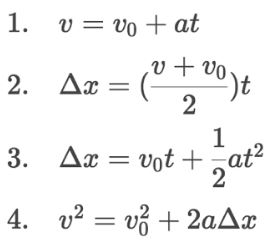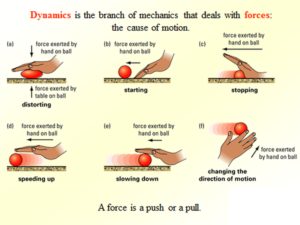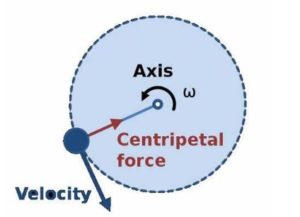AP Physics 1
What Are the Best Quizlet Decks for AP Physics 1?
8 min read•Last Updated on July 11, 2024
Kanya Shah
Kanya Shah
Quizlet is one of the best ways to prepare for the AP Exam! It is very easy to use and is set up for any learning style for every subject. However, sometimes it is hard to find a reliable Quizlet deck.
We put together some of the best Quizlet decks for AP Physics 1 for each unit to help you study for your AP exam!
Unit 1: Kinematics (12-18%)
Kinematics features the fundamental concepts of classical physics, which means that you need to understand the components of motion: velocity, acceleration, displacement, graphical analysis, and related ideas. The slope of a velocity graph gives you the value of acceleration, and the slope of the position graph tells you the velocity.
Best Quizlet Deck: AP Physics Unit 1: Kinematics by olivaeisch
-
- Velocity: This is the displacement per elapsed time. Velocity is defined as a vector because it gives a numerical value and the direction of the motion.
-
- Speed: Commonly confused with velocity, speed is simply how fast an object is traveling without a specified direction. This is a scalar quantity because only a number is associated with the measure.
-
- Free Fall: An object is under the influence of the force of gravity only. Air resistance is considered to be negligible in this case.

- Free Fall: An object is under the influence of the force of gravity only. Air resistance is considered to be negligible in this case.
Unit 2: Dynamics (16-20%)
This unit is about Newton’s Laws and the relationship of forces on interacting objects. It is important to understand the applications of contact forces, how to draw free-body diagrams, and conceptual ideas behind action-reaction pair forces.
Best Quizlet Deck: AP Physics I: Unit 2, Dynamics Principles by Taryn_Teggatz
-
- Newton’s First Law: An object at rest will stay at rest unless acted upon by a net external force. Likewise, an object moving at a constant speed will continue moving unless acted upon by an external force.
-
- Frictional Forces: This is the force exerted when an object moves across a surface (resists motion). Friction always resists motion in a parallel direction to the surface.
-
- Air Resistance: A type of frictional force that acts upon objects as they travel through the air. Since the force due to gravity is always downwards, the object slows down if air resistance is in the upward direction.

- Air Resistance: A type of frictional force that acts upon objects as they travel through the air. Since the force due to gravity is always downwards, the object slows down if air resistance is in the upward direction.
Unit 3: Circular Motion & Gravitation (6-8%)
This unit focuses on the forces, centripetal acceleration, circular motion, and gravity. You should know how to calculate the amount of force causing the centripetal motion and understand the concepts behind gravity’s impacts on objects in motion.
Best Quizlet Deck: APP1 - Unit 3 - Circular Motion & Gravitation by KathrynMK04
-
- Uniform Circular Motion: An object travels along a circular path along an external axis, where the speed remains constant but the object can accelerate. The object can accelerate with constant speed because there is a change in direction.
-
- Gravitational Mass: It is the amount of matter that measures an object’s response to gravitational force whereas inertial mass measures an object’s resistance to any force.
-
- Frequency: The number of cycles a revolving object can complete within a certain amount of time. It is measured in Hertz per second and is the inverse of a period which is the amount of time it takes for an object to complete one full cycle.

- Frequency: The number of cycles a revolving object can complete within a certain amount of time. It is measured in Hertz per second and is the inverse of a period which is the amount of time it takes for an object to complete one full cycle.
Unit 4: Energy (20-28%)
This unit discusses the relationship between work, power, and energy on open and closed systems. Prior understanding of forces may be helpful because you could be asked to calculate work, given partial information about a specific force. Be sure to understand potential and kinetic energy concepts along with how they can be applied in real life.
Best Quizlet Deck: AP Physics 1: Unit 4, Work and Energy Principles by Taryn_Teggatz
-
- Law of Conservation of Energy: Energy cannot be created nor destroyed but can be converted into different forms from one form. (i.e. potential and kinetic)
-
- Mechanical Energy: Energy possessed by an object based on its position or ability to do work. This type of energy can either be potential or kinetic energy.
-
- Closed Energy System: This a system in which no energy can from external sources enter and no energy from the inside can escape outside. Internal forces don’t affect the conservation of energy. This system is the opposite of an open system.
Unit 5: Momentum (12-18%)
This unit discusses momentum’s relation with force and time which includes using the Law of Momentum Conservation to interpret scenarios. Be sure to understand changes in momentum, analysis of open and closed systems, and know about impulse.
Best Quizlet Deck: AP Physics 1 - Unit 5 - Rotation, Energy, Work & Momentum by Jeffrey_Fitz
-
- Angular Momentum: The amount of rotation an object undergoes which is a product of its moment of inertia and angular velocity.
-
- Elastic Collision: This is a collision in which the total kinetic energy is conserved between two bodies. In a perfectly elastic collision, none of the heat is dissipated in any way (radiation or another form).
-
- Impulse Momentum Theorem: The impulse is equal to the change in momentum where the impulse is a vector and the momentum is equal to the mass times the velocity of an object.
Unit 6: Simple Harmonic Motion (4-6%)
This unit focuses on a new type of motion known as simple harmonic motion in which oscillations of an object are proportional to the equilibrium displacement from a given position. It’s important to understand the energy and period of this motion.
Best Quizlet Deck: Unit 6: Waves, Sound, and Simple Harmonic Motion by Collin_Preves
-
- Spring Constant: This is the ratio of the force affecting the spring to the displacement caused by it. Ideal springs follow Hooke’s Law.
-
- Elastic Energy: This occurs when an object, typically a spring, is stretched or compressed. Elasticity describes the mechanics of solid bodies and materials.
-
- Amplitude: This is known as the maximum displacement traveled by a point on a vibrating body/wave that can be measured from the object’s equilibrium position.
Unit 7: Torque and Rotational Motion (12-18%)
In this unit, you should be able to understand an object in rotational motion and grasp torque which causes rotational motion. You’ll be using the concepts of angular momentum, prior kinematics knowledge, and torque.
Best Quizlet Deck: AP Physics 1: Rotational Motion and Torque by brittcar
-
- Conservation of Angular Momentum: If no external torque acts on the rotating system, then the angular momentum of that system is constant.
-
- Torque: the tendency of a force to rotate an object about an axis. It is the force that causes twisting.
-
- Angular Acceleration: This is the rate of change in angular velocity. Angular velocity for an object in a circular motion is the rate of change in angular displacement.
Unit 8: Electric Charge & Electric Force
This unit is no longer tested on the AP Exam!
For this unit, it is imperative to understand electricity in terms of charges and interactions of charges. Be sure to know the conservation of charges and concepts of electricity.
Best Quizlet Deck: Unit 8: Electrical Charge and Circuits by allisonarnold4
-
- Coulomb’s Law: the force of attraction or repulsion between two electric charges is directly proportional to the product of the charges and inversely proportional to the square of the distance between them.
-
- Current: Flow of electrical charge. Current flows through a circuit when a voltage is placed across two points of a conductor.
-
- Electrical Field: This is a vector; since there are charges present, empty space is modified so the electrical force is able to act on particles without actually touching them. The field exists even when there is no force present.
Unit 9: DC Circuits
This unit is no longer tested on the AP Exam!
In this unit, you should understand how the principles of electricity are applied to circuits and the relationship between currents, resistance, and voltage. Key laws to know are Ohm’s Law and Kirchhoff’s Loop Rule applied to series and parallel resistors.
Best Quizlet Deck: AS Physics Unit 9 (DC Circuits) by leozhang285
-
- Kirchhoff's First Law: for any node in an electrical circuit, the sum of the currents flowing into that node is equal to the sum of the currents flowing out of the node. Conservation of charge.
-
- Variable Potential Divider: A variable resistor or linked resistor in series connected to a source of voltage and used to get a specific amount of the total voltage.
-
- Terminal Potential Difference: This is the difference in electrical charge between two points in a circuit which is expressed in volts.
Unit 10: Mechanical & Sound Waves
This unit is no longer tested on the AP Exam!
For this unit, you need to understand how waves interact when they are in certain exposure to air and water. This includes knowing the properties of waves, superposition and interference, and periodic waves.
Best Quizlet Deck: Physics Unit 10: Waves and Sound by mmetzger044
-
- Diffraction: the spreading of waves around obstacles. It can occur with sound, electromagnetic radiation, and small particles that have wave-like properties.
-
- Sound Intensity: the amount of energy flowing per unit of time through a unit area that is perpendicular to the direction in which the waves are moving.
-
- Harmonic Frequency: resonance frequencies that are integer multiples of the fundamental frequency which is the lowest frequency.
Conclusion
AP Physics can be difficult at times, especially when it seems as though there are several new formulae being procured from thin air. A tip to remember is that formulae can be rearranged to solve for a certain variable so they can be resourceful tools when solving a physics FRQ.
Sometimes being confused by the basic concepts affects how well you understand the latter concepts presented to you so if you try to focus on the foundations of each unit and then build your understanding from the roots, then you might be more successful in grasping the material.
Remember, understand the concepts and work on grasping the mathematics. Keep working hard, you can do it!